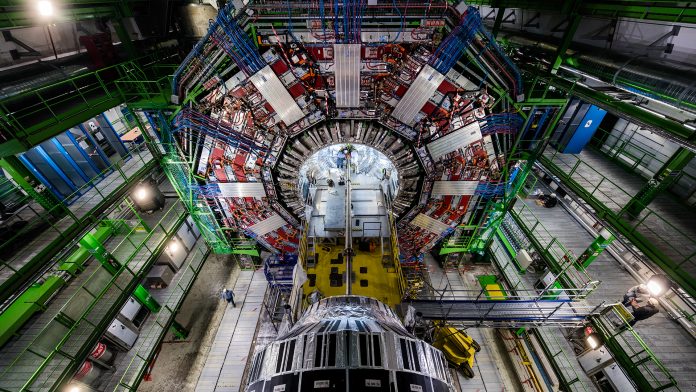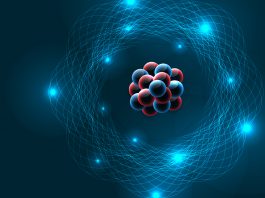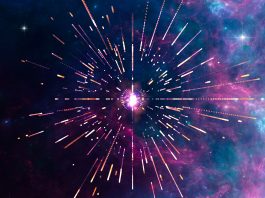As the Large Hadron Collider enters its Run 3 data-taking phase, Gaelle Boudoul, CMS Run Coordinator, explains what this means for the CMS experiment.
CERN’s Large Hadron Collider (LHC) is the world’s largest and most powerful particle accelerator, consisting of a 27km-long ring of superconducting magnets with a number of accelerating structures to boost the energy of the particles along the way. Since its initial operation in 2010, the LHC has been behind several groundbreaking physics discoveries, including the discovery of the Higgs boson.
The LHC has recently entered the ‘Run 3’ data-taking phase, after a three-year ‘Long Shutdown’ period for essential maintenance work and major upgrades. The LHC has a total of eight experiments that use detectors to analyse particles produced by collisions in the accelerator. The four large detectors are ATLAS, CMS, LHCb and ALICE.
One of the biggest of the detectors, alongside ATLAS, is the Compact Muon Solenoid (CMS) general-purpose detector. The CMS experiment has a broad physics programme ranging from studying the Standard Model (including the Higgs boson) to searching for extra dimensions and particles that could make up dark matter.
To discover what the Long Shutdown period meant for the CMS experiment, Georgie Purcell spoke to Gaelle Boudoul, CMS Run Coordinator.
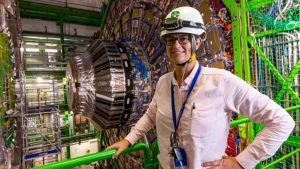
What makes CMS different to ATLAS, and what is it designed to achieve?
Both CMS and ATLAS are big experiments located on the LHC accelerator, with the same goal of trying to explore particle physics territory and to understand how particles work together. This will offer a clearer understanding of how matter is built. However, the two experiments are built in a different way.
For CMS, in particular, we have something very special in our detector. Although it is a big beast, it is still a compact detector. When we were designing the detector, we tried to make something new and different in comparison to ATLAS by putting a big magnet inside the detector, rather than outside like ATLAS, in order to make sure that all the sensors on our detectors are within a very high magnetic field. That is very important and is a very special feature, but it helps to have a better measurement of the energy of the particles which are produced during the collisions that the LHC is delivering. By having our magnet inside of the detector, the calorimetry that is measuring the energy is within a very high and strong magnetic field. This makes the precision in our measurements excellent.
You may wonder why we have two large detectors like ATLAS and CMS. The goal is to have scientific validity in our results. This means that, whatever CMS is measuring, we must ensure that ATLAS is seeing the same thing and vice versa, meaning that any discovery or any major measurements should always be true on both sides. This makes the results extremely solid. As we have very complex detectors and physics, it is very important to have this kind of verification between the two sides with different apparatus.
What updates were made to CMS during the Long Shutdown period of the LHC?
During this Long Shutdown, we were driven by two main aspects. The first one was to keep at least the same performance as before. For example, we replaced the very first layer of our detector, which is very close to the beam and was therefore ageing the most. We decided to replace it for Run 3 to ensure that we still have the same performance of having a great view of the collision at the closest point.
The second aspect was to improve as much as we can by taking advantage of new technologies. This has been achieved by two things. Firstly, we have increased the granularity of one of our detectors, which measures the energy in the central part. We also made a revolution in our computing farm. Next to our detector, we have a lot of computers that select events from collisions, which are interesting for our physics programme. These computers have been renewed during the Long Shutdown, with not only modern central processing units (CPUs), but also with new technologies such as graphic processor units (GPUs). Now, it is not only possible to look for different signatures of phenomena in our equations, but we also managed to reduce the resources needed, making it less costly.
Did you encounter any major issues during this time and, if so, how were they overcome?
The major issue we had was the COVID-19 pandemic. For us, we have been impacted by the pandemic like the rest of the world, but what is specific to us is that our model of working is based on international collaborations. So, when the world suddenly stopped and travel restrictions were imposed, our model of working was strongly affected. Like everybody else, we were shocked at first and did not know what to do. We were discovering this new world, but very rapidly we understood that we had the duty to make the detectors and accelerator run again after this Long Shutdown, so we quickly tried to adopt new ways of working. For example, international experts with essential expertise who could not travel to the site had to connect virtually with on-site personnel to help them build the detector. That was a real challenge, but we managed to achieve it thanks to the great enthusiasm of all the teams across the world.
What is it hoped that CMS will be able to discover since the enhancements were made?
Our physics programme is extremely rich. To summarise, I think there are three main aspects.
We discovered the Higgs boson in 2012. Since then, we have been focusing on that to expand our knowledge of it and make further discoveries. We have a lot of work to do to make a detailed map of how the Higgs is behaving. That is really the goal of the CMS experiment.
Another point is that the Universe is a big mystery. There are many aspects of the Universe that we have no idea about. We already know that there are things which we see like dark matter, but we don’t know what it is composed of. The LHC can help to rule out current hypotheses about what dark matter is, as well as potentially identify what it is.
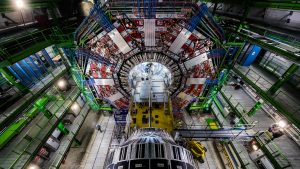
Lastly, we should not prevent ourselves from being surprised. The main goal of the LHC is to make discoveries. We are making a lot of collisions at high energy. I believe the goal is to look at the data we are getting from unexpected signatures, that would trigger a lot of discussion and explanation, making sure that we are not making any mistakes or anything else. I think the discovery for unexpected things is crucial.
As well as the restart of the LHC, CMS has also recently entered a new era in terms of its management team. What can we expect these changes to bring?
The CMS experiment is an international collaboration, and we have a constitution that determines how we elect the head of our experiment, known as the ‘spokesperson’. The head of the experiment is elected every two years, like a normal election. This process takes time.
We recently elected a new spokesperson, Patricia McBride from Fermilab in the US. She started her mandate in September, but the process took almost a year. We started to call for candidates at the end of last year and discussions about the candidates began in February, before a vote from CMS members took place, resulting in Patricia being elected. Electing the new spokesperson well before their mandate allows for an overlap with previous management to ensure a smooth transition.
Patricia has to face a lot of new things. First of all, Run 3 is starting, which is a very new aspect compared to the previous management. We have a lot of data to look at, understand, and digest, as well as potential discoveries to manage. She really needs to make sure that all results from the experiments are validated and solid. That is a huge task but, at the same time, the future is getting closer and closer. The future for us is post-Run 3.
We are already working to prepare for the future. At the end of Run 3, we will have a huge upgrade of the accelerator, which will provide much more collisions than it is providing now. We will therefore have to renew all of our detectors, including CMS. Here, Patricia will have to ensure that the new detectors are fully ready within a short timescale. She is now gathering all the teams to make sure that we are working towards the same goal.
Gaelle Boudoul
Run Coordinator
CMS Experiment
https://cms.cern/
https://www.facebook.com/CMSexperiment
https://www.youtube.com/c/CMSExperiment
Please note, this article will also appear in the twelfth edition of our quarterly publication.

